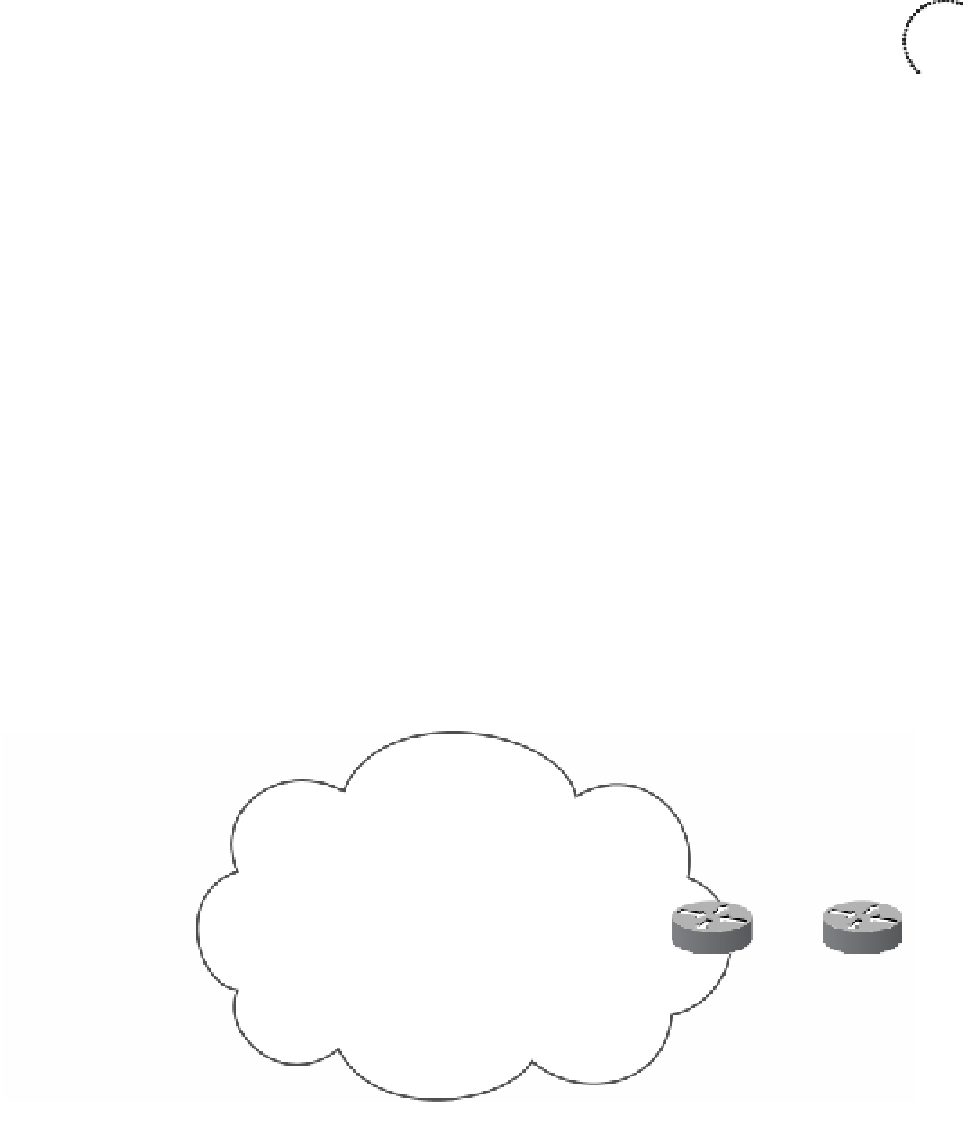Information Technology Reference
In-Depth Information
Multiprotocol Label Switching
MPLS is technology for the delivery of IP services using labels (numbers) to forward
packets. In normal routed environments, packets are forwarded hop by hop from the
sources to the destination. Each router in the path performs a Layer 3 destination address
lookup, rewrites the Layer 2 address, and forwards the packet to the destination. However,
MPLS functions by marking packet headers that include label information. As soon as
packets are marked with a label, specific paths through the network can be designed to
correspond to that distinct label. MPLS labels can be set on parameters such as source ad-
dresses, Layer 2 circuit ID, or QoS value. Packets that are destined to the same endpoint
with the same requirements can be forwarded based on the labels, without a routing deci-
sion at every hop. Typically, the labels correspond to the Layer 3 destination address,
which makes MPLS the same as destination-based routing.
Key
To p i c
MPLS labels can also be used to implement traffic engineering by overriding the routing
tables. MPLS packets can run over most Layer 2 technologies, such as ATM, Frame Relay,
POS, and Ethernet. The goal of MPLS is to maximize switching using labels and minimize
Layer 3 routing.
In MPLS implementations, there are customer edge (CE) and provider edge (PE) routers.
The CE router resides at the customer premise and that is typically where internal and ex-
ternal routing information is exchanged. The CE router then connects to the PE router,
which is the ingress to the MPLS service provider network. The PE router is in the service
provider network.
Figure 6-6 shows an end-to-end MPLS WAN and how the CE routers connect to the PE
routers.
MPLS Provider
Network
CE Router
CE Router
PE Router
PE Router
Provider (P)
Routers
Figure 6-6
MPLS
Dark Fiber









